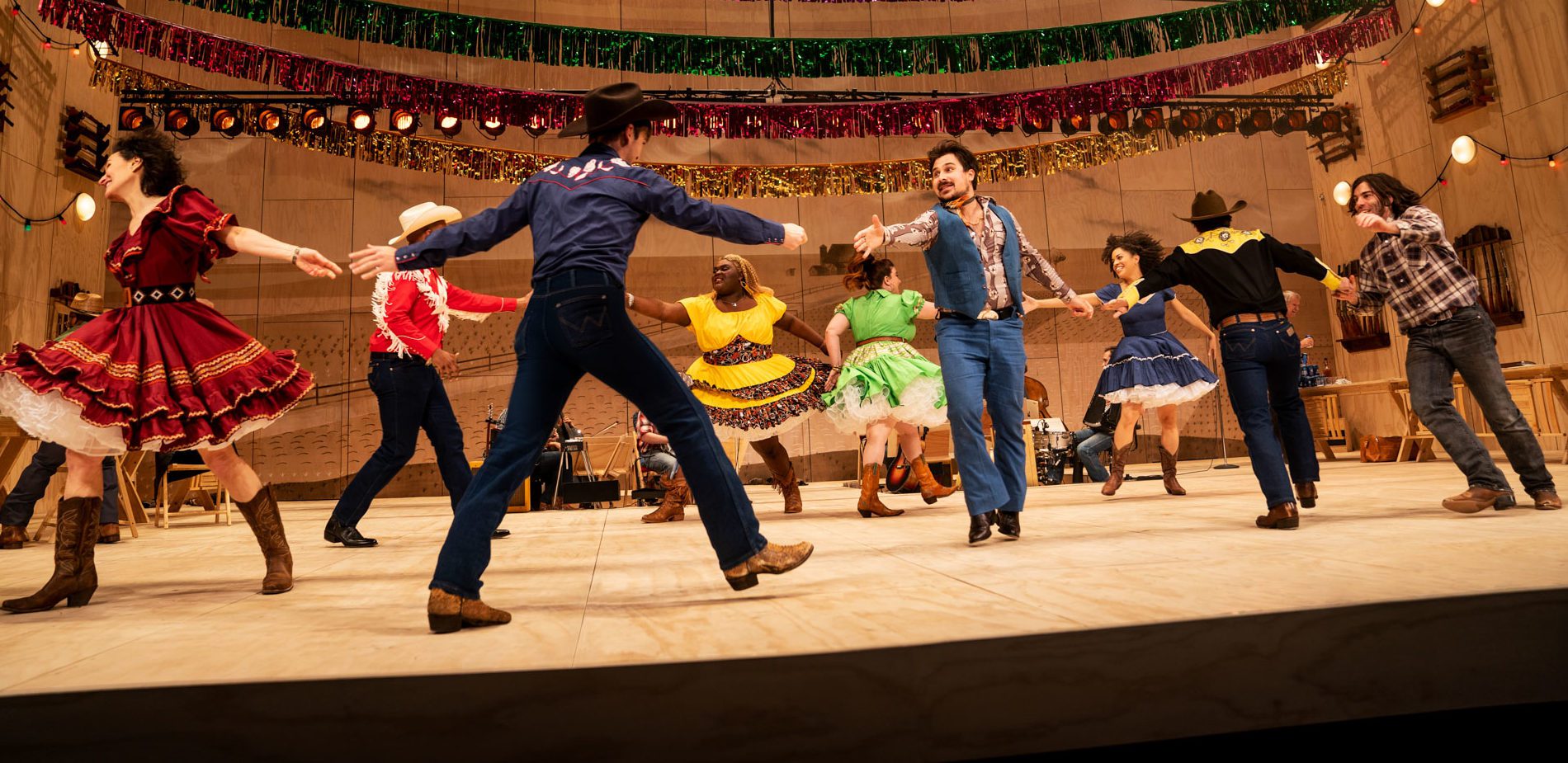Debuting at the St. James Theater on March 31st, 1943, Oklahoma! was a production unlike any other. Written by Oscar Hammerstein II and Richard Rodgers, it defied the established conventions for musical theater, using song, dance, dialogue and score for the ultimate purpose of supporting its storyline. Previously, musicals centered on showcasing performers’ talents, giving minimal attention to the development of the plot or characters.
Inspired by Lynn Riggs’s play Green Grow the Lilacs, Rodgers originally attempted to write Oklahoma! with a different partner, Lorenz Hart. However, Hart declined the opportunity, believing that its subject matter – life on the western frontier – was unappealing to a wide audience.
Rodgers eventually joined forces with Hammerstein, and their work on Oklahoma! set the stage for their futures in theater. The award-winning duo went on to write nine musicals, including Carousel, The Sound of Music, and The South Pacific. Rodgers and Hammerstein’s Oklahoma! became one of the most successful American musicals of all time.
Many attribute the musical’s major success to the United States involvement in World War II. Its cheery musical numbers, down-to-Earth characters and punches of knee-slapping humor served as an escape from the turbulence of the times. And for many Oklahomans, the musical still hits close to home.
“Not every state has a Rodgers and Hammerstein musical,” says Kristin Dodson, chief executive officer at Celebrity Attractions. “It seems like everybody has a story to tell when it comes to the show.”
The Revival
Celebrity Attractions will bring Oklahoma! to the Tulsa Performing Arts Center from June 14-19. Directed by Daniel Fish, this revival challenges audience’s expectations of the classic Broadway musical. Instead of framing life on the western frontier as idyllic, the production trades its rose-colored glasses for lenses that expose the musical’s darker, more harrowing undercurrents.
Fish grapples with themes of violence, the role of the outsider, and a sense of community without making any notable changes to the script or songs.
“It’s very fascinating that [Fish] can completely change the heart of the musical without changing the words,” says Dotson.
More specifically, the production leaves behind some of its touchstones, such as a colorful set, the stereotypical wardrobe of petticoats and stockings, and a full orchestra, to instead explore its main characters with unparalleled emotional depth.
Actor Sean Grandillo, who plays Curly McClain in the touring production, says that the cast strives to portray their characters “as fully fleshed human beings.” Rather than having a clear tug-of-war between good versus evil, the musical unpacks each character’s vulnerabilities and desires.
“This production gives a lot of people the opportunity to see themselves in a piece that almost feels like a historical reference,” says Grandillo.
Audiences can expect an immersive and thought-provoking experience. In lieu of an elevated sense of performance, Fish’s revival often breaks the third wall through its set design and the actors’ delivery of their lines. Its bluegrass band mingles on stage as a part of the cast, and its characters remain in view for the majority of the show. Select venues also participate in the concept of dinner theater, serving spectators chili and cornbread at intermission.
Although Fish’s revival is distinct, it reinvents the production with a similar goal that Rodgers and Hammerstein once shared: to broaden the horizon of the American musical and to tell a story that inspires its audience to experience a breadth of emotions.
“[The musical] has changed with the times, just as what it means to be an American has changed,” says Grandillo. “I can’t think of many pieces that stand the time of time for 80 plus years and remain beautiful and relevant.”


Photos by Matt Murphy courtesy Celebrity Attractions


























